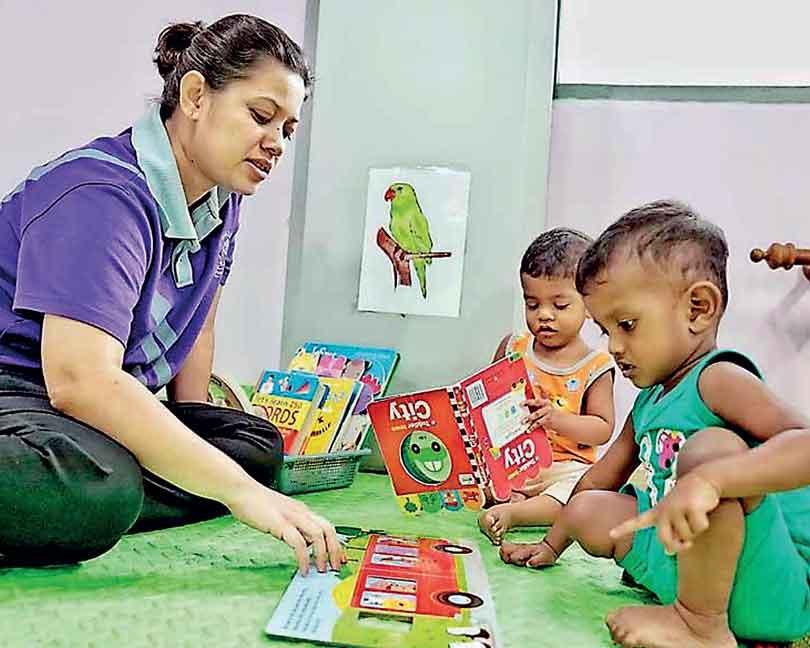13 Jun 2024 - {{hitsCtrl.values.hits}}

If the government is genuinely committed to the vision proposed in the National Policy for Child Day Care Centres, it will need to not just say but also do–and show that it is doing–what is proposed in the guidelines
 The National Policy for Child Day Care Centres will soon be received by the Cabinet. The policy is guided by the vision of providing high-quality, affordable and accessible day care services that protect the rights and well-being of all children and enable parents (particularly mothers) to take up or return to employment due to the availability of day care services.
The National Policy for Child Day Care Centres will soon be received by the Cabinet. The policy is guided by the vision of providing high-quality, affordable and accessible day care services that protect the rights and well-being of all children and enable parents (particularly mothers) to take up or return to employment due to the availability of day care services.
This vision represents a welcome shift in the policy discourse, which has for too long identified, both explicitly and implicitly, care work as the responsibility of the household, especially women. But does this belated addition to the policy landscape offer too little, too late? This article considers two areas of intervention that may help this policy succeed: (i) enhancing the visibility of the proposed mechanisms to monitor the quality of child day care centres, and (ii) a broader vision for the redistribution of care work outside the home.
Habitual aversion to compliance
The National Policy for Child Day Care Centres was preceded by The National Guidelines for Child Daycare Centres, which received Cabinet approval in 2019. The guidelines cover a wide spectrum of issues, ranging from the registration of day care centres and their physical environment, to the importance of learning and play, health and safety, working with parents and guardians, and more. The extensive involvement of experts on child care and child development is evident in the comprehensive guidelines, as is the government’s commitment to build on global best practices.
The overarching emphasis of these guidelines is on maintaining quality, and rightly so. Ongoing work at Verité Research has highlighted the poor quality of childcare services as a major deterrent to their uptake, even among households that are able to afford the cost. Our research highlighted that mothers were eager to join the labour force but unable to do so, given the absence of high-quality childcare options or part-time employment that would allow them to work while their children were at school (i.e. the only time of the day when they have access to a reliable, alternative means of childcare).
Given that Sri Lanka’s track record of compliance with guidelines is notoriously low, we need to do more than just hope that the child day care guidelines will be spared the habitual aversion to compliance. If the guidelines are perceived to be too stringent by care providers, or if resource constraints mean that child day care centres simply cannot adhere to the guidelines, it may also create opportunities for rent seeking behaviours. Therefore, increasing the level of trust in child day care centres will require a demonstrated effort by the government to maintain the quality standards proposed in the guidelines.
This means that if the government is genuinely committed to the vision proposed in the National Policy for Child Day Care Centres, it will need to not just say but also do–and show that it is doing–what is proposed in the guidelines. In other words, the public will need to know not only which regulatory and monitoring mechanisms are in place but also how they are functioning, and that they are not compromised in any way. Ultimately, if the government is guided by the aim of protecting the rights and well-being of all children that are placed in day care centres, it needs to be willing to hold itself accountable for their safety.
It is not only the young who need care
The government has rightly identified policies aimed at redistributing childcare outside the household as being instrumental to reducing the ‘double burden’ borne by women and enabling their increased workforce participation. However, it is not only the young who need care.
In Sri Lanka, the challenge of meeting eldercare needs looms large. Currently, Sri Lanka has the highest proportion of persons aged over 60 in South Asia, and more than one in four persons in Sri Lanka will be above 60 years of age by 2050. The Country Diagnostic Report on Long-Term Care in Sri Lanka (2021) by the Asian Development Bank observed that eldercare is still primarily provided through informal care mechanisms, with female family members being the primary caregivers.
A child day care policy that does not acknowledge the entirety of care responsibilities currently shouldered by households—and women in particular—will do little to enable women who want to work to return to the labour force. In our ongoing research, women in urban and estate-sector settings described the need for day care centres for not only the young but also the elderly. These women were determined to care for their elderly parents and relatives, but their financial hardships also meant that they could not afford to not work. A shared approach to providing elder care both within and outside the home – through day care centres for the elderly – was identified by some women as an acceptable alternative solution.
Viable policies in the care economy
It is essential that a realistic and holistic view of the care context underpins any proposed policy relating to the care economy. With a national policy and guidelines that have a promising impact on the wellbeing of children and parents, it would be a shame if the familiar problem of low regulatory compliance were to hinder any substantial improvement from the status quo and, in turn, render this a failed policy. Additionally, an integrated care policy approach–which focuses not only on childcare but also other care needs within the care economy–will be crucial to redistributing care work outside the home, and driving any real improvements to female labour force participation.
Dr Venya De Silva is a social anthropologist and a research director at Verité Research. Research support for this article was provided by Portia Kemps, a junior research analyst at Verité Research.
24 Nov 2024 4 hours ago
24 Nov 2024 7 hours ago
24 Nov 2024 8 hours ago
24 Nov 2024 8 hours ago